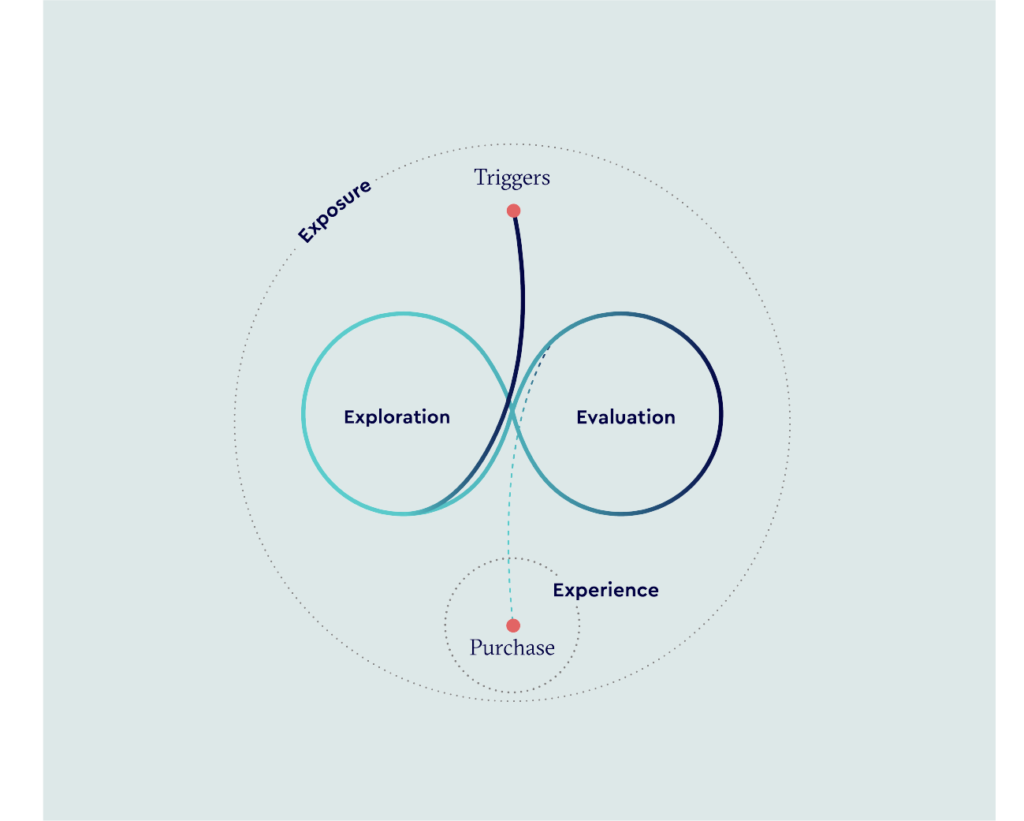
Untangling The Messy Middle
How to leverage the complexities of the buyer journey to your business’s benefit.
In every journey, there’s always a little slack time in the middle where nothing seems to go quite as predicted. It’s a bit like those car trips of yesteryear when your Dad inexplicably pulled down a side street to pursue a ‘shortcut’ and landed you a mile or two off the pre-planned route, somehow still managing to get you to your destination within the same time.
Your family may have gone around the streets and houses – both literally and figuratively – to compare which roads are free from traffic and boast better navigation, but that time still got you the exact thing you set out for in the end. Far from being a wasted trip, about, for example, the different types of houses on offer in the area, compare parking availability and figure out just how far a tank of petrol will get you when you’re taking a creative journey to Aunt Mabels.
So, if we’re talking about consumer behaviour and how you can harness it, you might be wondering why we’re first taking a trip down memory lane. Well, this car trip works as a strong metaphor for the modern web user’s buying journey, as they bounce from site to site during their decision-making process before committing to a compelling product – also known as the Messy Middle.
This unexpected detour is a learning experience for the driver (a digital marketer) and their passengers (buyers) alike, even if both didn’t intend to take that trip in the first place. And on the trip, before reaching that final destination, both will undoubtedly enter the Messy Middle – a key part of the buying journey.
If you are seeking help or advice on navigating this strange road, you can speak to a member of our team today by phone on 0161 327 2653 or email [email protected].
So What Is the Messy Middle, Exactly?
The space between Point A and B that prospective customers journey through is what we call the ‘Messy Middle’. This is a term coined by Google, following the research of boffins – behavioural scientists and data analysts on their consumer insights team – which took a closer look into the expansive activity of buyers, especially in the rapidly populating and complex space that is the modern online market.
Taken directly from their study document titled, ‘Decoding Decisions – Making Sense of the Messy Middle’, the term refers to this hugely important but often overlooked part of the consumer’s buying experience, taking into account anything and everything bought on the web. This Middle Stretch, with its winding and unpredictable purchase journey, is where people decide what they are going to take to the checkout.
It takes into account the deliberations we all make before clicking buy – for example, our ingrained need to have things instantly, making us click the option with fast delivery, or the promise of a free warranty offered from competitor brands.
But influencing a customer’s purchase decision, at this stage, isn’t as clear-cut as it should be, which is why we’ve put together this guide to understanding all the complicated factors involved. The Messy Middle is perhaps one of the more bold projects out there, factoring in essential lessons for us in SEO and content production. Considering the mental modes customers use on a daily basis – especially in a hyper-saturated online market – allows us to improve and tailor our own creative processes, giving our digital products the chance to stand out when it matters most.


Where Can We Find the Messy Middle in the Wild?
As the internet becomes more and more overloaded with content across multiple sectors, we can’t expect the purchase behaviour of customers to stick to a set, rigid action.
- Most content marketers will understand the concept of a linear buying journey, which usually presents itself like this:
- Awareness – Potential customers are first aware of the existence of a product or service.
- Interest – They actively express an interest in a particular product and will start to explore options.
- Consideration – A buyer might begin to look over and compare key product specifications and influential aspects, such as price, to help narrow down their search.
- Purchase – At last, the eagle has landed. The customer has settled on their choice, popped it over to checkout, and has put their well-earned cash towards a pool table, hedge trimmer, baby bassinet, or one of the millions of other products available on Sir Timothy John Berners-Lee’s world wide web.

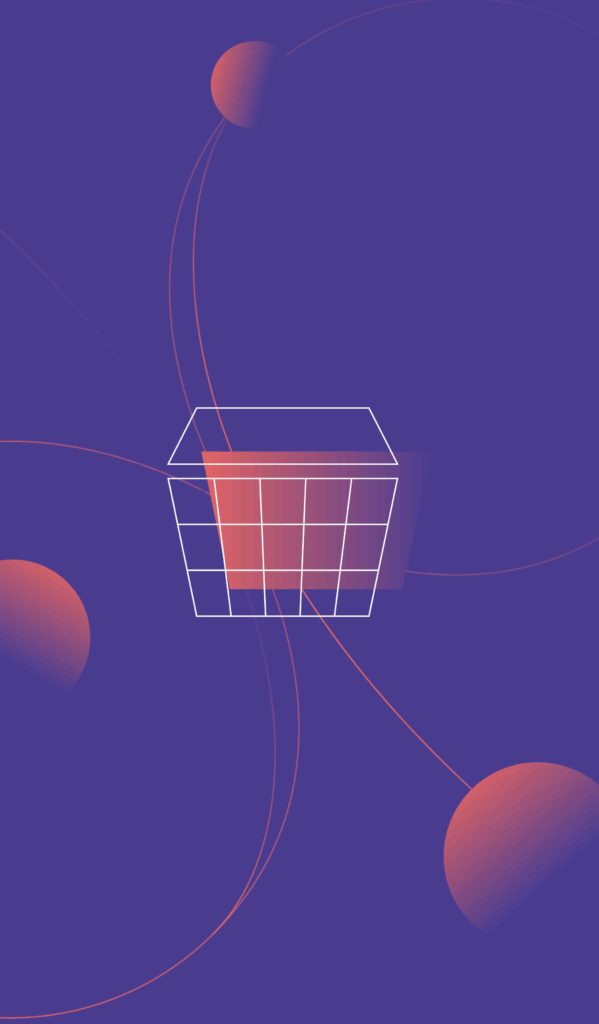
Now, the original ‘purchase funnel’ is slightly outdated.
Considering our framework for the modern purchase journey is built on a concept first dreamt up 123 years ago in 1898, we might be slightly understating this fact. First dreamt up by the fabulously named E. St. Elmo Lewis, this ‘purchase funnel’ mainly considered newspaper advertorials and, later, billboard and radio sales, but it has since evolved into a number of different models across the marketing industry.
Conversion funnels for e-commerce and souped-up versions of the original buyer’s funnel have been replugged to include keyword advertising, searches, impressions, and more, all in a bid to keep up with the technological leaps incorporated into our sector.
But even in modern instances, the linear journey struggles to encapsulate all the weird and wonderful ways people explore the internet during the ‘interest’ stage of this funnel, which goes completely off the deep end as they travel into the ‘consideration’ phase. This is where the Messy Middle comes in – completely befuddling over 100 years of fairly straightforward marketing, mainly because the online market itself has become so proliferated with customer reviews, influencer marketing, and edgy start-ups.
It’s Only Getting Messier
For example, in 2017 alone, eBay had 167 million users, over 1 billion items for sale – of which more than 80% of the items were new, with a total of almost $90 billion worth of product. With the addition of thousands of online marketplaces and standalone shops, the sheer amount of products that shoppers are privy to is astronomical.
So it’s completely understandable that this ‘messiness’ is the result of consumers navigating a super-saturated market with a huge array of product variables. There’s even more opportunity for people to suddenly be sucked in by a new service or product if their interest is sparked by just one interesting content thread, which can reposition the trajectory of a successful buyer’s journey.
We hear you cry: ‘But content comes in many forms – what do you mean a single piece can be the difference between someone buying trainers from one site or choosing another? That’s so broad!’
Yes, dear reader, it is. From listing a brand-new feature that their desired product has to results popping up showing the same item being sold for 15% off, these are all factors that can lead customers away from the straightforward buyer’s journey. If anything, the linear structure of the buying journey is quickly becoming a relic of the past as shoppers become more aware of attractive variables such as delivery, price, and everything in between. As a result, the Middle is only becoming Messier.
Despite the so-called mess, the team at Google have truly outdone themselves in creating a clean and simple graphic that allows you to understand what makes a successful journey to a buyer. At a glance, we are able to understand what makes millions of people tick as they search through thousands of different online sectors while factoring in both external and internal influences.
Right at the heart of the model lies the ‘Messy Middle’, this shifting space in the gap between trigger points and purchase is the active spot where customers are won or lost. Browsers will look for information on a particular product or brand within their chosen category before weighing all the options.
While digging, the messy middle will prompt two mental modes in users: exploration, an expansive activity, and evaluation, a reductive activity.
The Messy Middle Is The Modern Day Buying Journey.
Let us help you leverage this chaos with sophisticated, multi-channel campaigns that target users throughout their entire purchase journey.

Embryo were amazing to work with and delivered some incredible results for the brand. The team are so easy to work with and couldn’t do enough for us!
What Happens in the Messy Middle? Two Mental Modes
While operating in this online space, even if a person is using review websites, search engines, or social media, those actions can be boiled down to one of these two modes. Exploration and evaluation are part and parcel of the Messy Middle itself and can be looped over and over as users follow interesting breadcrumbs between different web pages. When we tie these mental modes into the entire model, we can begin to comprehend the lengths that people will go to for the best price or free delivery – which is quickly becoming an addictive sport in its own right.
But before we reach the exploration-evaluation loop, the first stage of the model is exposure.
A ‘real-life’ case study’
Let’s say it’s three PM on a workday and you’re craving the sweet, sugary kick that only an iced finger can provide. But thanks to the gradual exposure of high street brands such as Greggs, Costa, or Greenhalgh’s that’s come naturally over the years, you have an immediate stock of places that, in theory, should do a nice bun.
With this information already in your brain, it would be so easy to make a decision and pop to one of these bakeries on your afternoon break, right? If only it were so simple. This is where the Messy Middle itself comes in, as your brain, in musing over all of the available options, begins to cycle back and forth between the two exploration-evaluation mental modes.
You might ask yourself if a high-street brand is a bit basic, for example. Or perhaps distance is a sudden factor and you don’t fancy schlepping that far from the office just to inhale your treat on the way back. Maybe you’re feeling guilty that all your cash is going to Greggs and you might make the Tuesday of that one indie bakery on the corner. Or if the buns on Pret’s display are just as good as the buns behind the counter, you might be swayed by the chance of additional eye candy… either way, the Messy Middle knows no bounds.
The potential of your decision is looping and limitless, as is this section of the buyer’s journey.
But you’ve only got so long to choose a spot before your boss wants their 4 o’clock report. So you might draw on your previous experience (the last section of the model) to help you make a choice. You might remember a bad purchase experience the last time you grabbed a cake from Starbucks, or perhaps a work colleague pipes up and says the indie bakery is ‘nice but overpriced.’
Armed with this new insight, you’re suddenly en route to Greggs for a Belgian bun – even if they no longer do their lovely pink iced fingers, the price point and possible proximity to the office is just too good to miss.
With that, we can see Google’s Messy Middle model in full context. Not only can we start to understand the process itself, but we can also see all the various thoughts and environmental factors that can become a powerful motivator when buying online. If you’re struggling to see the ‘iced bun’ scenario through the lens of a journey taken while browsing the web, consider the various different bakeries and their wares as products that are less expensive, offering free delivery (are closer) or simply look better than their brioche counterparts.
Aybala Coskun, a Senior Product Operations Specialist at Delivery Hero who has been observing the Messy Middle, notes that users will switch between exploration and evaluation until they ‘break(s) the loop to get something out of this whole mess of abundant information and unlimited choice… this is where they use unconscious cognitive shortcuts to shorten, automate and simplify their decision-making process.’ (uxdesign.cc)
Any single factor can make or break a potential business interaction – especially when our complex human brains are in charge – meaning that marketers will have to consider this model in order to maintain a competitive advantage in this saturated online space. However, it’s not always about working harder but working smarter. We need to put the study in first.


The Messy Middle in Action
So, let’s look at a real-life example of this loop and find out what factors can break the loop, taking us from merely considering a product to committing to a purchase.
One of the experts who has been unpicking the Messy Middle itself is Kristin Sutter, Head of Strategy and Insights at Google Australia and New Zealand. Discussing her research on the Think with Google podcast, she was able to detail the entire process from start to finish using her own experience while trying to find a hotel ahead of the upcoming Australian Open.
Kristin first set out to search for a particular chain of hotels in Melbourne. Like many of us who are part of a loyalty program, she originally wanted to limit the scope of her search to these hotels as she could cash in on those all-important points, all while considering the price and how close it would be to the Grand Slam tournament itself. Then, somewhat predictably, the journey began to go slightly off course when she came across a new hotel – with not only great reviews, but also boasting the same amount of stars as her go-to chain.
Although compelling on paper, these similarities weren’t enough to give Kristen the push she needed to make that final switch. After all, she wouldn’t get those loyalty points if she parted ways with her usual hotel. So, what would it take?
‘…The thing was, they were offering me a free breakfast with our booking,’ she laughed. ‘The way to my heart is through free food.’
And with that, what you might have thought was a guaranteed, relatively uncomplicated booking on the purchase journey was quickly derailed by the promise of a morning croissant.
From a marketing perspective, it would seem like a given that Kristen would just book with her regular hotel. She’s a repeat customer, who is aware of the points program and how their brand works but in the middle of the messy ‘consideration’ bit of her evaluation process, her priorities changed. At that particular moment, her purchase decision was influenced by a need for more value – which, depending on the customer, could’ve been as simple as a free slice of avocado toast before going to watch Grand Slam Tennis. Suddenly, her previous and rational attachments to the other hotel didn’t matter at all.
This is where the impact of behavioural science principles on the Messy Middle really makes itself known, forming the backbone of Google’s indispensable guide to customer habits past, present and future.
What Are Behavioural Biases?
As users consider their options during this section of the buying process, cognitive biases will play a huge part in moulding shopping behaviour and prompting one choice over another. Much like Kristen’s sudden attraction to avocado toast earlier, these behavioural biases are right at the heart of a number of choices we make as humans, especially when emotions cause us to take action in the decision-making process. Behavioural biases are irrational beliefs which influence our decision-making process. Emotional biases involve taking action – our emotions affect our judgement rather than rational thinking.
A lot of these cognitive biases come after years of evolution. And what does evolution put above all else? Survival. So even though modern-day life has us chasing down buses instead of woolly mammoths, we still have many leftover processes that help us make split-second decisions on the fly – even if many are flawed. Automatically assuming a product that has thousands of 5-star reviews on an online shopping platform is good happens to be a great example of deeply embedded Social Proof bias. Thinking you’re destined to hit every red light possible when you’ve woken up late for work, but it’s mysteriously clear when you leave early, is Confirmation Bias.
Essentially, humans are funny creatives that are still hardwired to react in certain ways – even if they are wrong. That’s the joy of psychology.
‘But what about my keyword rankings?’ Cry the digital marketers among you. ‘How can my website expect to even show up in this messy middle you speak of?’ Listen, we hear you. But to ensure your website or brand lands visibility at this key stage, learning how to harness the behavioural science that drives your customer base is key – and we’ll get to keyword rankings a little later on.
Now for the science part. Although the brain employs hundreds of these biases day in, day out, Google researchers chose to prioritise six for this particular study. These cognitive processes may seem tricky to implement as part of an online strategy, which is why so many of us choose to focus on getting our websites to rank through traditional means.
The following biases used by Google’s Research Team showed marked success in nabbing clicks away from initially preferred choices, much like the promise of avocado toast that we saw earlier:
-
Social Proof
You can boost the likelihood of a click by showcasing reviews, star ratings, supplier graphics and logos, case studies, and recommendations from previous buyers, inferring ultimate satisfaction with the company and/or product/service. At our core, humans are pack animals living in complex, interdependent societies and will always look to other people for guidance and resources.
-
Category Heuristics
In our daily lives, heuristics play a huge part in helping us make decisions and solve problems. They are like mental shortcuts that, when used in marketing, act as a springboard to help a customer finally make a purchase decision. These vital pieces of information allow users to easily search for what they are looking for without having to scroll through endless guff. It’s all about simplifying the amount of content and sorting it into the most relevant points. This helps to conserve interest, stopping potential customers from jumping ship and considering any other alternatives.
-
Authority Bias
Never underestimate the power of a white coat. On a psychological level, we humans associate ultimate authority with this bit of kit, resulting in some shocking study results back in 1961. Unlike the Milgram Obedience Experiment – which had test subjects willingly administer ‘lethal’ amounts of electric shocks to other participants just because the teacher wore a white coat – we can use this subconscious effect to drive people to make choices. Better choices than shocking innocent test subjects, mind you. The most common example of this behavioural bias can be found in toothpaste advertising, where a smiley, gorgeous dental professional tells you that 91% of all dentists use that particular brand. We associate this image with authority and knowledge, inferring that this company, product, or service is a leading one and thus make the choice to buy it. Although we might not have the whole story or statistical details, that implication is enough to make consumers switch.
-
Scarcity Bias
Time is money, money is power… but what happens when we capitalise on those precious minutes? Humans have a strong, in-built scarcity bias that harks back to our caveman days. We want to ensure we have enough resources to survive, so we automatically assume that items or services that are in limited supply are important – even if they are actually found in abundance. So, when we are told ‘this offer only lasts until the end of the day’, ‘we’re down to the last 5’, or ‘ten other people have this in their baskets’, our brains go into overdrive and make decisions much faster. Another great example can actually be found in The Muppets Christmas Carol, where Rizzo the Rat (dressed as a Victorian fruit seller, for context) happily tucks into his stock of apples: ‘Hey, I’m creating scarcity! Drives the prices up…’
-
The Power of Free
There’s an Afghan proverb that decrees: ‘Vinegar that is free is sweeter than honey’. It’s a fair saying, as psychologists constantly log the impact of what they call ‘Affect’ – or the ‘power of hooking people with free stuff’. Promising free delivery with a product, a free trial period, or a giveaway with sign-up terms is more likely to compel audiences to make purchase decisions, all because a particular emotional trigger has been pulled. In his book ‘Predictably Irrational’, Professor of Psychology and Behavioural Economics Dan Ariely says that free isn’t just a price indicator, but an irresistible compliance tool. For example, when we choose car insurance, we will meticulously calculate every aspect of the deal to avoid feeling sadness or disappointment. This is called ‘Post-Purchase Cognitive Dissonance‘ – the fancy, psychological term for Buyer’s Remorse. So when we see a cuddly toy thrown in for free, we’ll happily take that because we are suddenly gaining more than initially expected – essentially, our brains have been tricked into assigning more value to this free item than it is really worth. At the end of the day, a free Meerkat is a free Meerkat. Simples.
-
The Power of Now
Our brains are pre-programmed to want things now over long-term gratification, and it’s a scientific phenomenon that logical reason can’t seem to budge. In most psychological studies, it’s understood that we act on the ‘pleasure principle’, which drives us to fulfill urges and simple needs like breathing, eating, and drinking in order to stay alive. But over the years, this ‘want’ has evolved into a hankering for more auxiliary needs, like a brand-new mobile phone or the latest games console, for example. Technology has also pivoted to give us instant gratification in spades, thanks to our rapidly shortening attention spans, the reward of fast-loading information, and the addictive bursts of dopamine we get from likes and notification pings. It makes perfect sense to harness these principles in marketing. We can sway customers to use a particular brand or retailer if they promise to solve a consumer issue within a shorter time frame, such as your car ‘being insured and ready to go within five minutes’ or next-day delivery. Essentially, this bias works because it promises that humans will receive a useful benefit. We love that! But then it promises that we will receive that benefit in a shorter period of time. Now we love it even more… prompting that all-important *click* to buy.


When these six biases were tested, the authors of the Decoding Decisions Google document found that they could significantly improve the likelihood of a consumer making an active choice to buy from a company, and they also showed useful biases relating to the products on offer.
After having initially carried out this study in the UK and then replicating it in chosen spots in mainland Europe, such as Denmark, the study ultimately found that although showing up (meaning your website or brand, for example, appearing before a potential customer) in the first place is important – implementing behavioural sciences lit up their results: **‘**The second choice brand [was] able to take a full 90% of preference away from the first choice brand when supercharged with all six biases.’
In this large-scale shopping experiment, which used real in-market shoppers interacting with 310,000 carefully constructed purchase scenarios, consumers were asked to pick their first and second favourite brands within a category. These came from a range of sectors, such as consumer packaged goods, traditional retail, utilities, travel, and financial services.
During the process, participants were asked to pick their first and second favourite brands within a proposed category, then a range of behavioural biases was applied to see if people would switch from their original preference. To gain further scope (and add a little spice to the proceedings) an extreme scenario was also tested, where researchers included a completely fictitious brand to each category – of which shoppers had no prior knowledge.
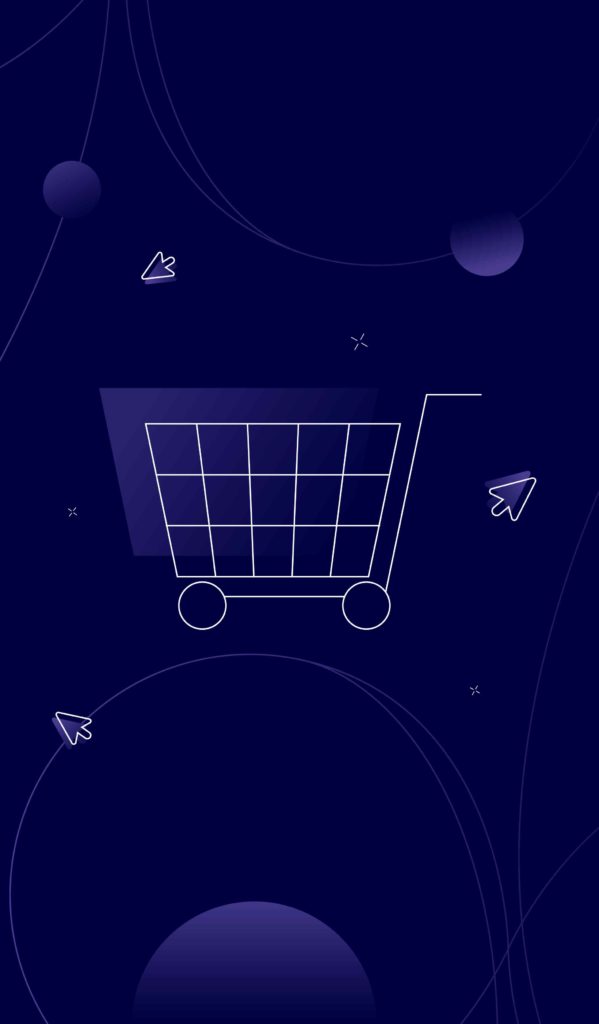
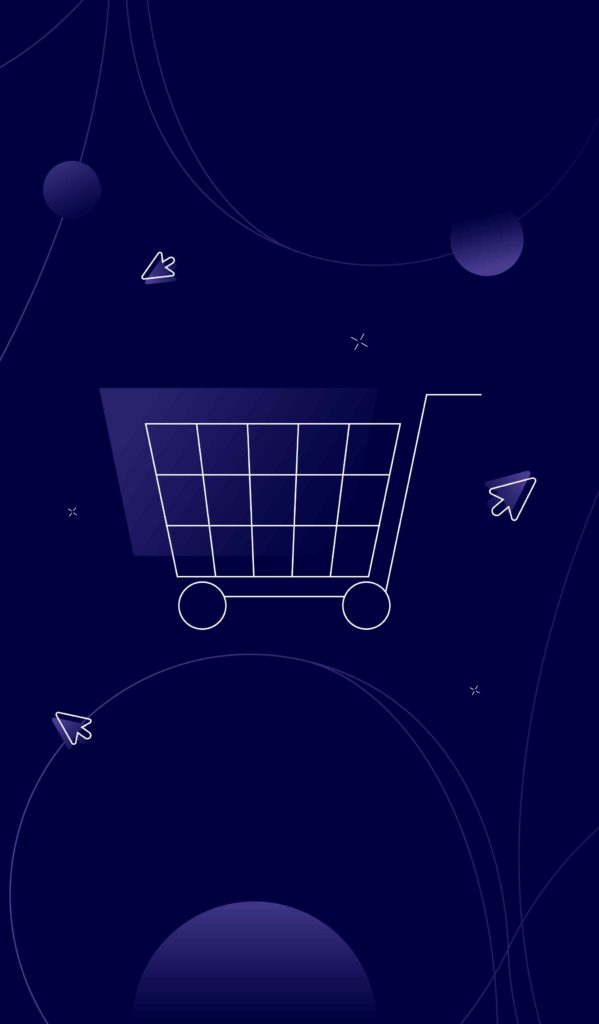
The results were incredibly insightful. A fictional cereal brand – arguably the least effective ‘challenger’ – out of the available options still managed to clinch 28% of shopper preference from the established favourite. This was a notable improvement, thanks to the addition of benefit ‘supercharging’, which catered to shopper’s behavioural biases, including five-star reviews (Social Proof) and 20% extra gratuity (Power of Free).
In the most extreme case, when supercharged with all six bias advantages, a fictional car insurer won a whopping 87% share of consumer preference.
Regarding the takeaways from their experiment, Alastair Rennie, a Research Lead in Google’s market insights team, summarised: ‘If you’re unsure about this, remember that marketing history is literally littered with brands that seemingly appeared overnight and then came into a market and took a significant foothold… remember that a fake brand in our purchase simulation is a pretty good proxy for a challenger brand out in the real world.’
These results revealed that identifying and applying these biases were crucial, even for unknown, seemingly outlier brands, and proved that they could successfully divert buyers’ attention while in the messy middle. But brands are still important: ‘Despite our best efforts to swing things in favour of the fictional brands, in every category, many shoppers remained loyal to their favourite brand even when the alternative offered a vastly superior proposition.’
It goes to show that, although behavioural biases are a key component in capturing the gaze of potential customers, marketers need to also prioritise their presence in order to hold it. A third of the respondents would go for their second choice if offered that option before they buy, so it can be down to sheer luck. Sometimes showing up at the right time makes all the difference.
Leave ‘Em in Tiers: Targeting Your Audience at the Right Moment
It’s easy to think that your website will be served up to a buyer during their ‘exploration-evaluation’ stage simply because we’ve woven enough keywords through our content. During the keyword research stage of strategy planning, the team at Embryo will not only find relevant keywords with high search volumes but a variety of short, mid and long-tail keywords too.
These words not only identify what your customers are looking for but also let us know what stage of the buyer’s journey they are at. Traditionally, long-tail keywords are used by potential customers who are making their final product evaluations and want specific pieces of information (wordstream.com) – such as the perks of a particular type of trainer for running. This research is also about discovering which terms have the most search volume and competition, helping us sort through words that will be easier or harder to rank, drive the most traffic to your website, increase brand exposure and encourage conversions.
We sort these out into three tiers. In Tier One, we can find the top level of keywords, which are generally found to be short tail, broader topic focused. These high intent terms are usually the first things people search for and will often be dominated by PPC ads or heavyweight brands. We often strive to have keywords that do well within this tier, because we equate great domain strength to success and profit – but if we aren’t vigilant, we can miss out on the more granular searches people make as they navigate the messy middle.
People who are looping between exploration and evaluation are making the spaghetti-like journey between Tiers Two – longer tail search terms – and Three, as ontological questions. These tend to be less populated terms and keywords that might deliver ‘hit-and-miss-leads’ but can be easier to rank within, establishing your website as an authoritative voice and tapping into new leads.

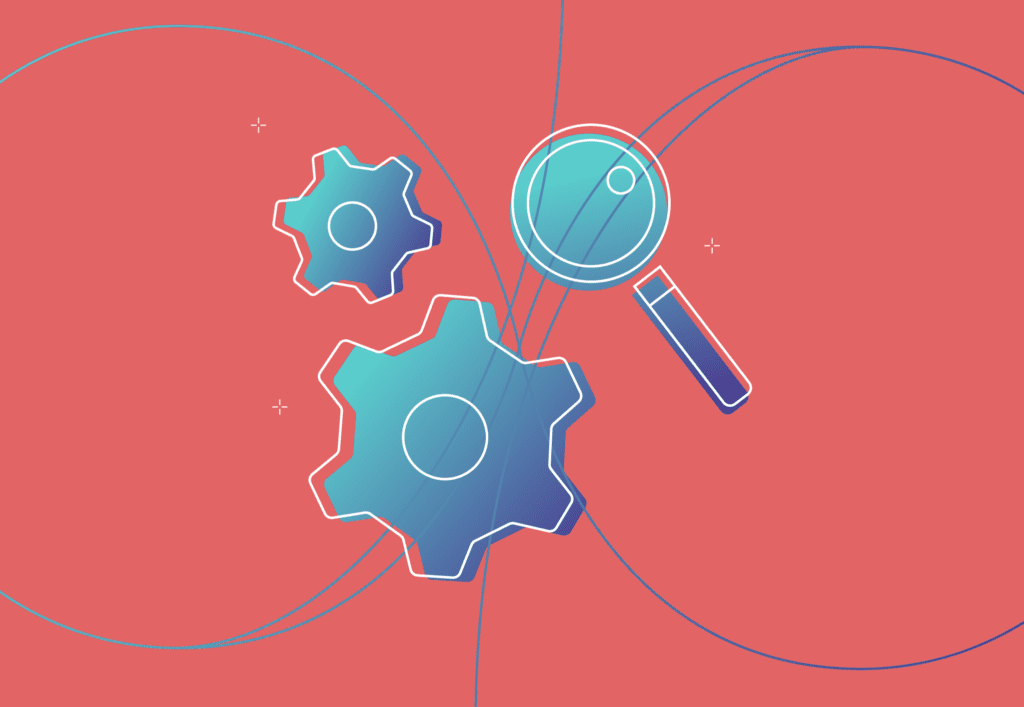
How to Use Keywords to Show Up and Change Mind
As decreed in the Decoding Decisions Google Document: ‘The power of showing up – how simply being present in moments of deliberation can be enough to win or retain consumer preference.’
Although we should harness the power of behavioural biases and try to understand the mental modes behind buyer compulsions, any digital marketer worth their salt knows that you first have to create content. Far from another page of waffle to throw on the internet, the goal is to write relevant and interesting content that will appear to potential customers during the ‘exploration-evaluation loop’ phase.
It might seem obvious, but buyers are navigating this loop for a reason. No one wants to spend their evenings endlessly digging and clicking between reviews, listings, unboxing videos – but they do want to make sure that they are 100% convinced with their choice to buy, for example, a particular pair of trainers. So it’s up to you to pounce on this uncertainty and persuade them to buy your shoes and not go to a rival brand.
Here at Embryo, we’re dab hands at creating multi-faceted content strategies that include a number of search phrases. Over the years, we’ve had plenty of experience crafting plans for clients that fit Google’s discovery, helping them ‘show up’ as much as possible and get those conversions. Of course, targeting keywords is the bread and butter of any digital marketing agency – especially ones that utilise SEO – but we have seen incredible success thanks to our long-form content.
This content not only appears to curious buyers in the hyper-saturated messy middle, which is the hardest thing to do, but is valuable enough to persuade them to switch to the products and services of our clients.


Intermingle
By using Intermingle, an incredible piece of software built by our very own fair hands, we are able to look at real-time snapshots of Google’s search engine results pages (SERPs) for keyword searches – such as the term ‘men’s trainers’.
With a search volume of 165,000 for that keyword alone, plus the domination of PPC advertising, the first bit of organic content to appear on Google’s SERP is from sportsdirect.com (at 56,430), a brand with an obviously huge marketing budget – here, only just clipping the SERP ‘fold’. From a glance, we know that anyone competing for domain space within a Tier One keyword is going to need a sizeable budget to knock them off.
Even if we manage to rank a website within this tier, we are losing much easier battles within Tier One and Tier Two, simply because the content is too general. It simply does not ‘show up’ in the messy middle.
So, to succeed in Tiers Two and Three, we need to think a little smaller. Narrower, even. Since these are the areas that our buyers are bouncing around in while evaluating different products and their uses, we need to ensure content can answer those questions. By the time users get to Tier Three, these high-intent purchasers are no longer looking for what they want but who they want to buy from, which are golden opportunities that smaller businesses are picking up and cashing in on.
Our Intermingle snapshot shows this perfectly. In the second column, you can see how we’ve narrowed our search term, very slightly, to ‘mens running shoes’ (instead of the broader, more competitive, ‘men’s trainers’), search volume decreases to 33,100. Paid ads still trump the top of the SERP, but the first piece of organic content – prodirectrunning.com – begins at an accessible volume rate (11,320), giving us plenty of room to rank. Now, if we really want to get those sales in the bag and target users that are on the cusp of making that purchase decision, we can target a super-granular search term that they may be asking: ‘Are Adidas Boost the best men’s running trainers?’, which is depicted in the third column of the snapshot above.
Tier Three is perfect for positioning your brand and website as a go-to resource for users asking questions, allowing you to create heaps of optimised content that is more likely to appear above the fold and gain domain authority. ‘People Also Ask’ is the first feature that Google prioritises as it tries to take an active role in leading users around the internet, giving digital marketers more opportunity to actively persuade consumers to make a decision and choose their brand – and knowledge – over competitors.
It’s easy to neglect the bottom two tiers of the Keyword Pyramid in favour of duking it out over a popular keyword, but companies are easily missing out on the same amount of business that could be gained by exploring voluminous Tier Two and Tier Three terms.
In Summary, Embrace The Messy Middle
In essence, when we utilise the Messy Middle, we are giving ourselves the ultimate edge – understanding what people are searching for, applying knowledge of mental modes and behavioural biases, and implementing them into your SEO and content strategies. Every website owner, marketing professional, or anyone working in this field are urged to take note – and advantage – of the previously unpinnable Messy Middle and our collective buying behaviours. Much like garlic bread, it is the future.

By far the best agency I have ever worked with! Every single member of the team is a pleasure to deal with. They're absolutely brilliant at what they do! Highly recommended.
